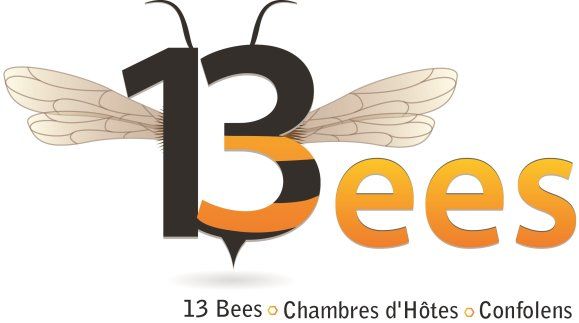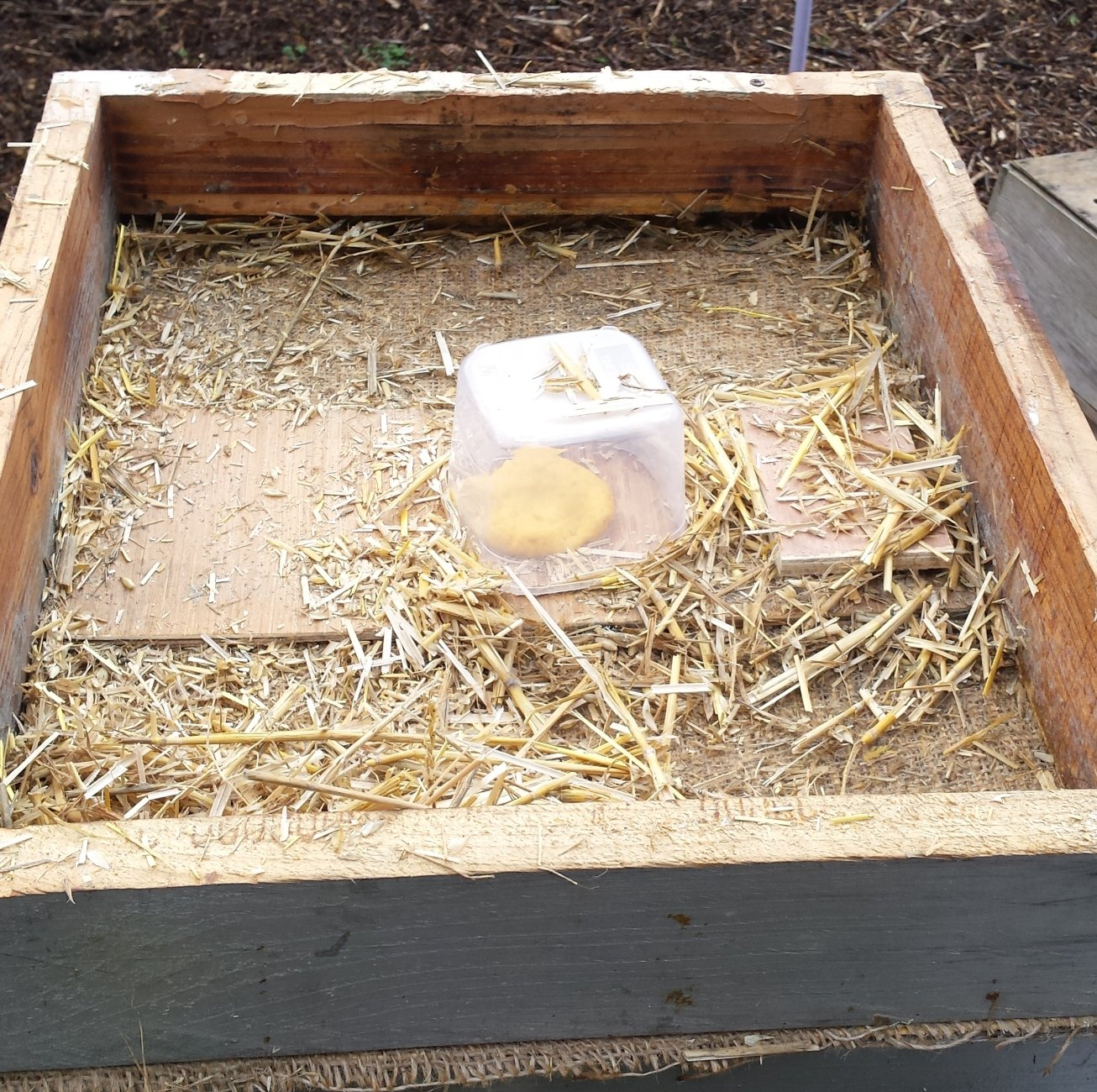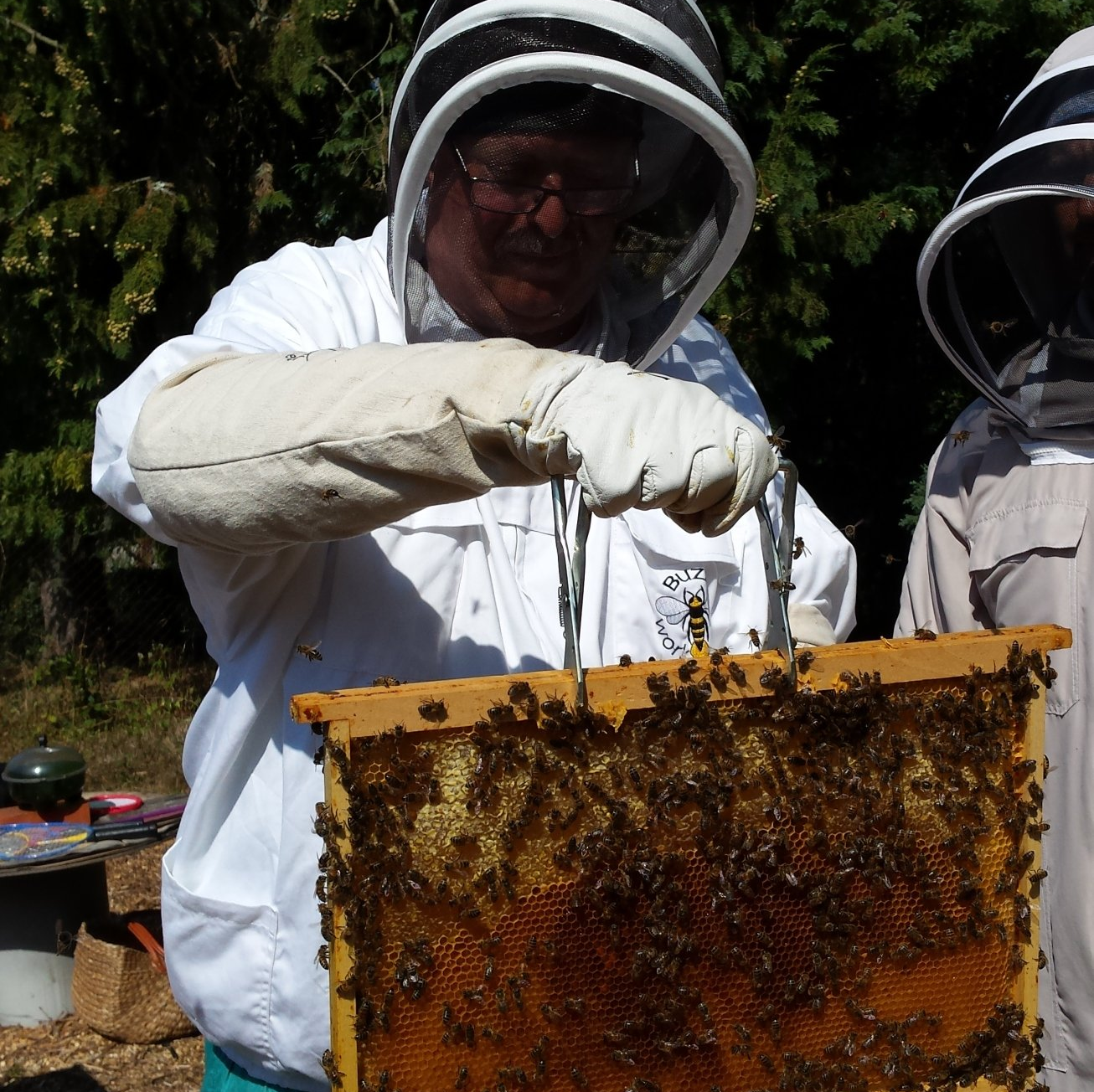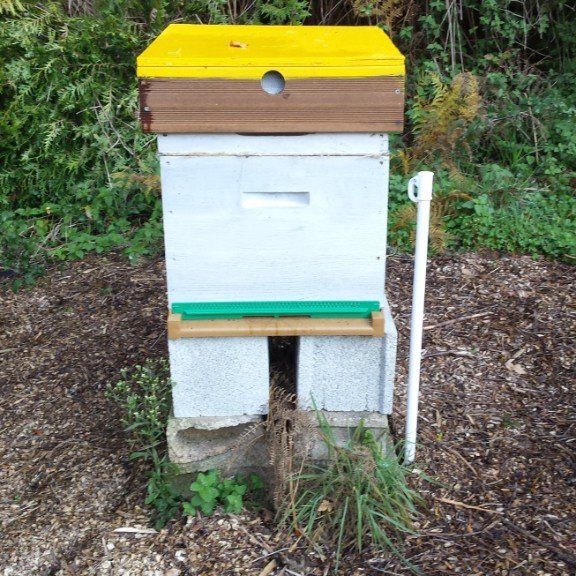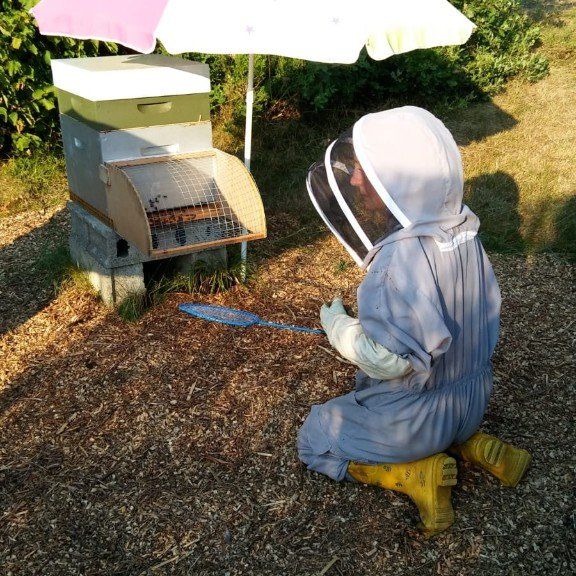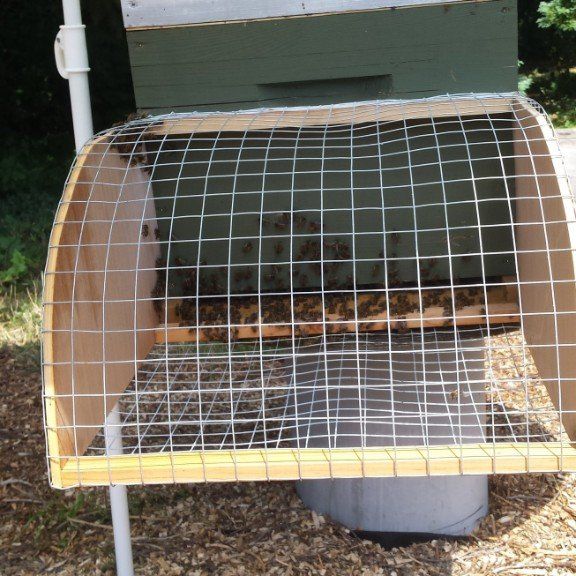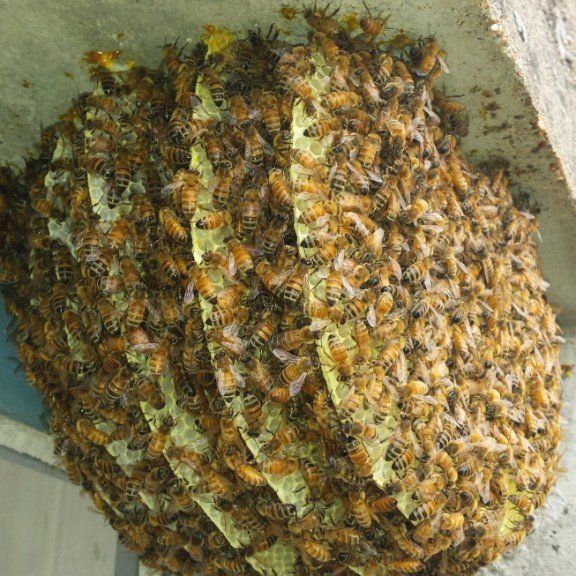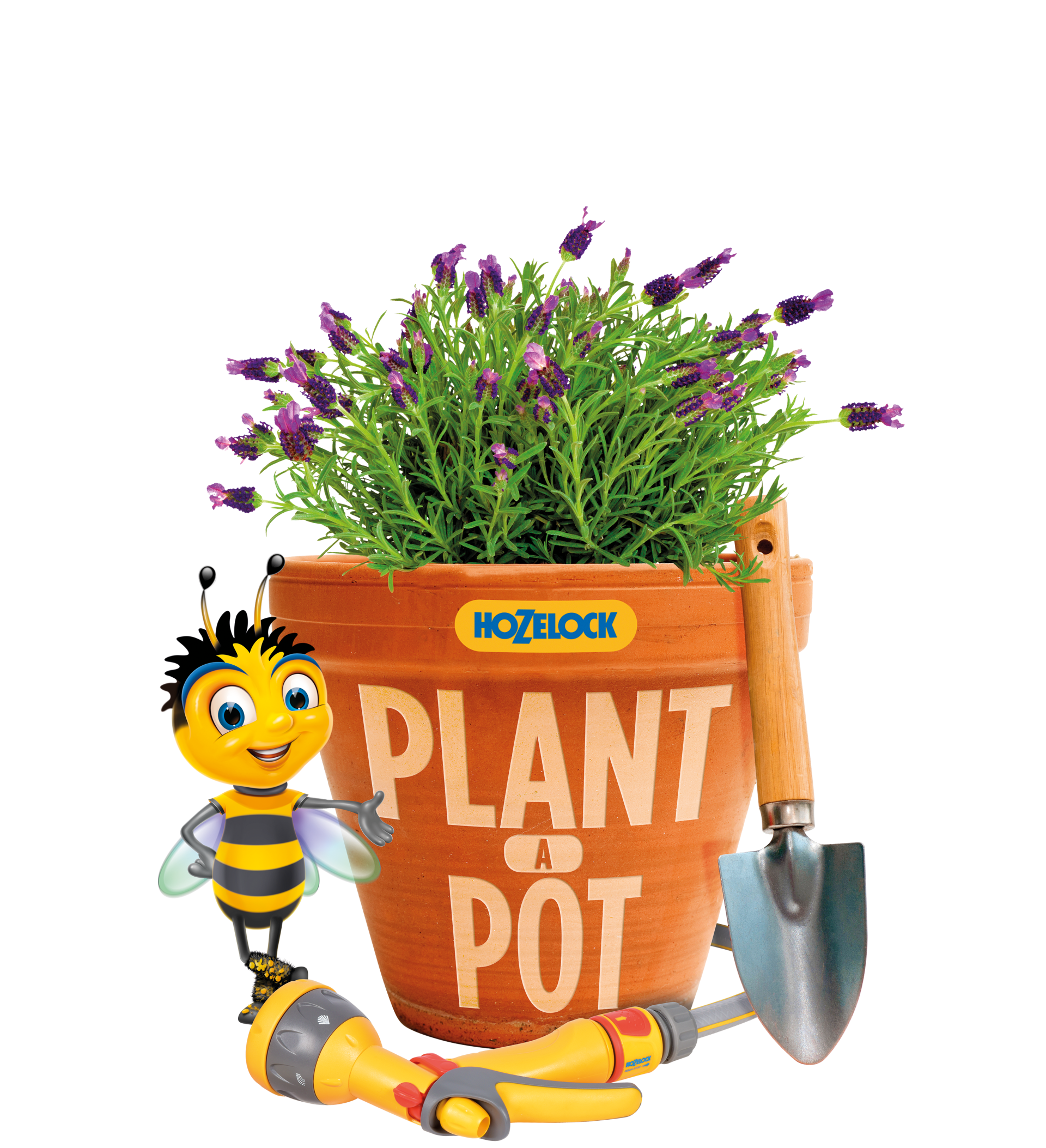Asian Hornet Update
A summary of our 2018 efforts to combat the hornets
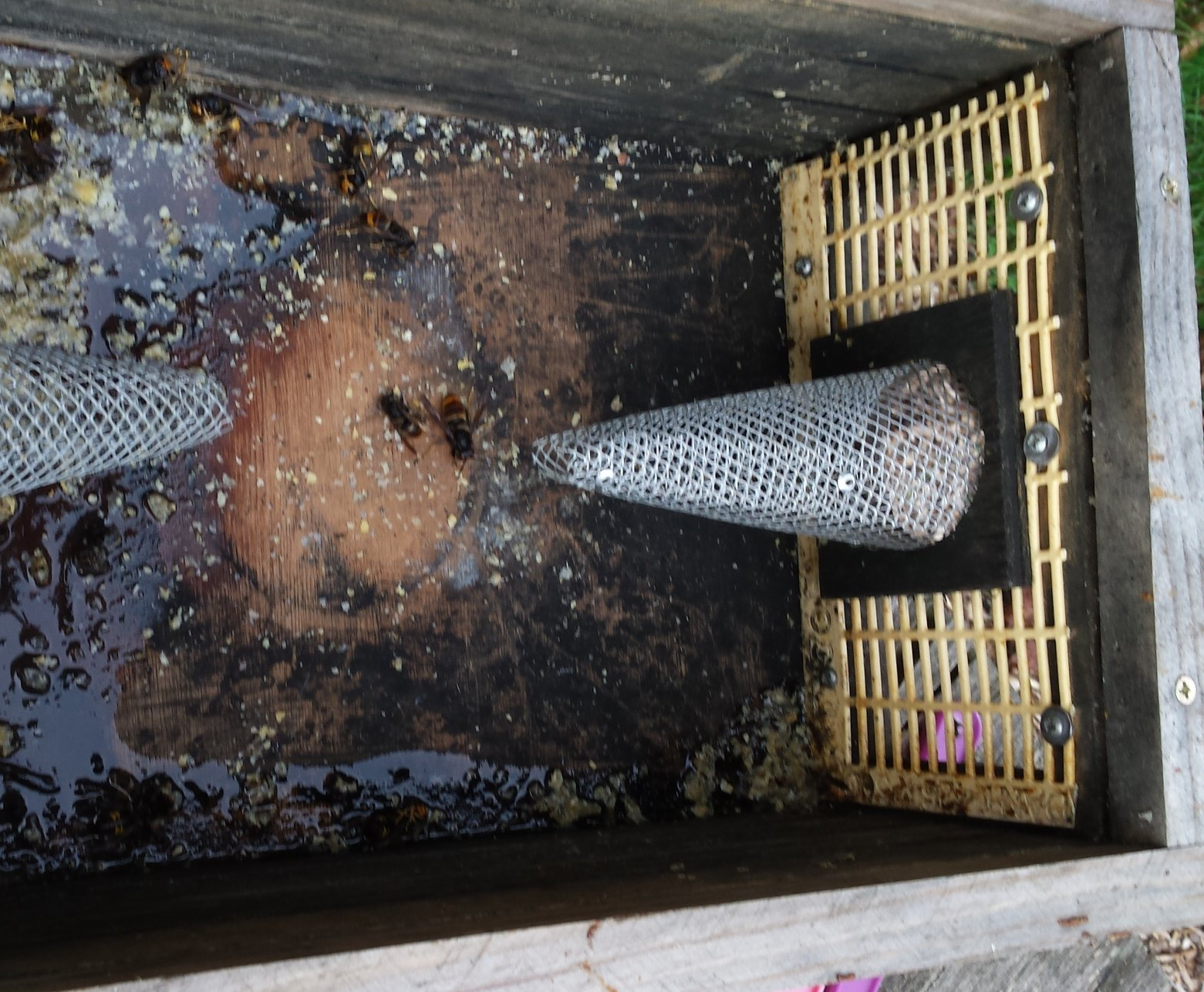
It's the first week of December, quite cold and damp, and due to the leaves falling we now have a better chance of spotting hornet nests. Granted, they are empty of hornets at this time of year, but at least we can find them. Given the heavy predation we have experienced over the past few months, and the numbers of hornets we have successfully trapped, we knew that there was a nest fairly close to our hives, but we were unable to locate it in time to destroy it. We finally spotted a nest last week - on the other side of the river, but in reality only about 700m from our property. At this time of the year most of the 'ordinary' hornets have died off, but the queens are looking for places to over-winter - log piles are favourites. On a few days recently the weather has been mild and so there are still some hornets flying around, looking for a last meal...what they typically find is me perfecting my backhand stroke with a badminton racket.
As regular readers will know, we've tried many things this year to protect our bees from the threat presented by the Asian hornets. The aforementioned badminton racket is a favourite but unfortunately unsustainable as we can't stand in front of our hives all day every day. Bottle traps baited with a sweet 'n' sour liquid mixture have worked fairly well, although the number of other insects (European hornets, wasps and butterflies) trapped as well as the Asian hornets is a shame. Vita sent us some experimental sticky traps, which are exactly as they sound - cardboard sheets covered in a very strong glue. The struggling insects caught in the glue attract others and these were extremely effective when we placed them next to some honey frames - the hornets flocked to the frames and then were caught on the sticky traps. We had to observe these closely though and bring them in at night because when we didn't, other larger creatures (mice and gecko lizards) were also caught on the traps, which we found unacceptable.
So, did anything work? Well, I'm pleased to say 'yes'! The 'mesh cone' trap featured in the above photograph, has trapped over 700 hornets since September, with another 30 or so in the past month, all of which look large enough to be queens. This is especially good news - if we can trap/kill the queens then there won't be any to build new colonies next spring. We baited the trap with some honeycomb which attracted lots of different insects, all of whom except for the Asian hornets were small enough to escape (the lid and sides are made from old plastic queen excluders) - perfect for our requirements, no collateral damage (or 'by-catch') and lots of hornets.
As well as trapping hornets, we attempted to deter them from hawking around the hives in the first place. Hornets are attracted by the scent of a hive, and so we tried to mask this by daubing vapour rub underneath the landing boards/entrances of the hives. If nothing else, our apiaries helped our sinuses...! This seemed to work a bit in that any hornets were slightly confused by the strong smell of menthol, but it soon wore off.
Our other deterrent was to use a hive muzzle (see previous blogs for an explanation of what this is) - this didn't really work as intended in that the hornets quickly adapted and started hawking underneath the muzzle which is where the bees were. We still think the muzzles are a good idea, they just need some improvements. We are going to tie string or ribbon, or maybe long grass, to the bottom of the muzzle so that there's a sort of curtain hanging underneath it; the bees will be able to access the hive through the 'curtain' but the hornets won't have space to hawk. We are also going to affix the muzzles to the hives much earlier in the year so that the bees have a chance to get used to them before the first hornets appear.
Despite 2018 being the worst year yet for hornet predation that we have experienced, we are hoping we have done enough to help the bees survive the winter, and we are ready for next year's onslaught. From spring 2019 we are offering 'Asian hornet awareness' courses alongside our usual range of beekeeping experiences, so if you are an aspiring beekeeper or already keep bees but haven't yet met this challenge, do get in touch and come and meet the Asian hornet face to face. Hopefully you will then prepared and will know what to expect if ever you have to deal with this very real problem.


